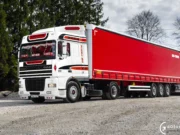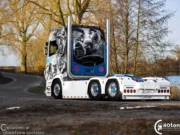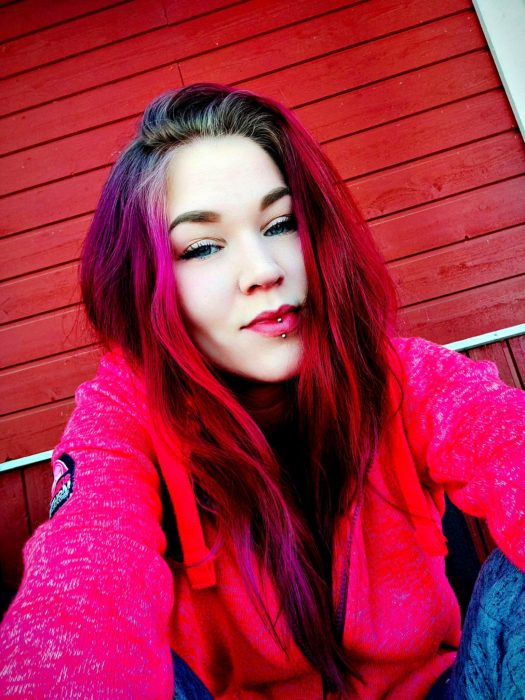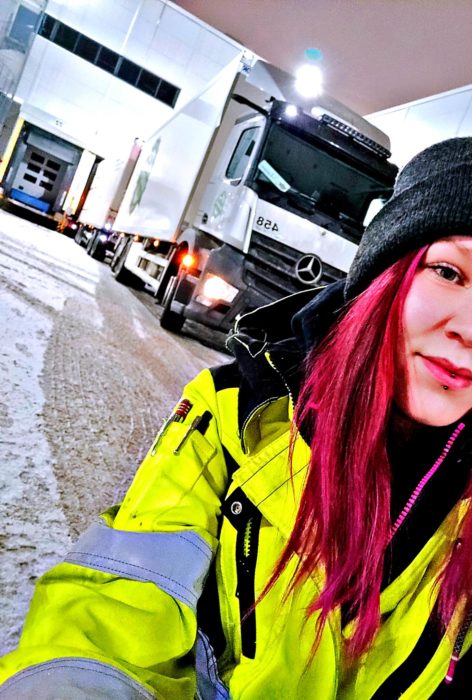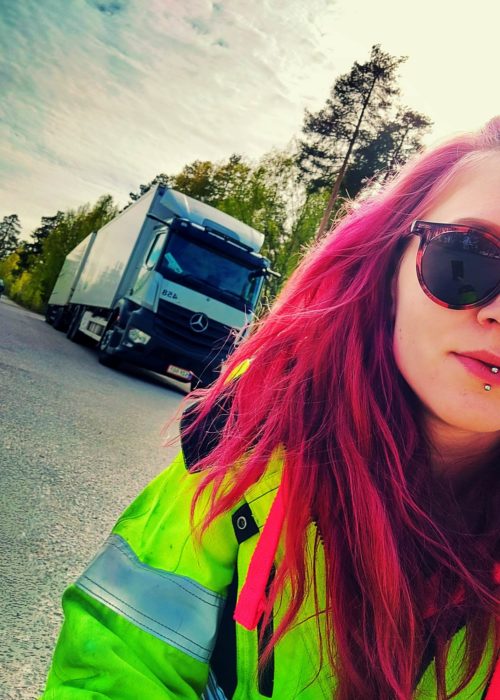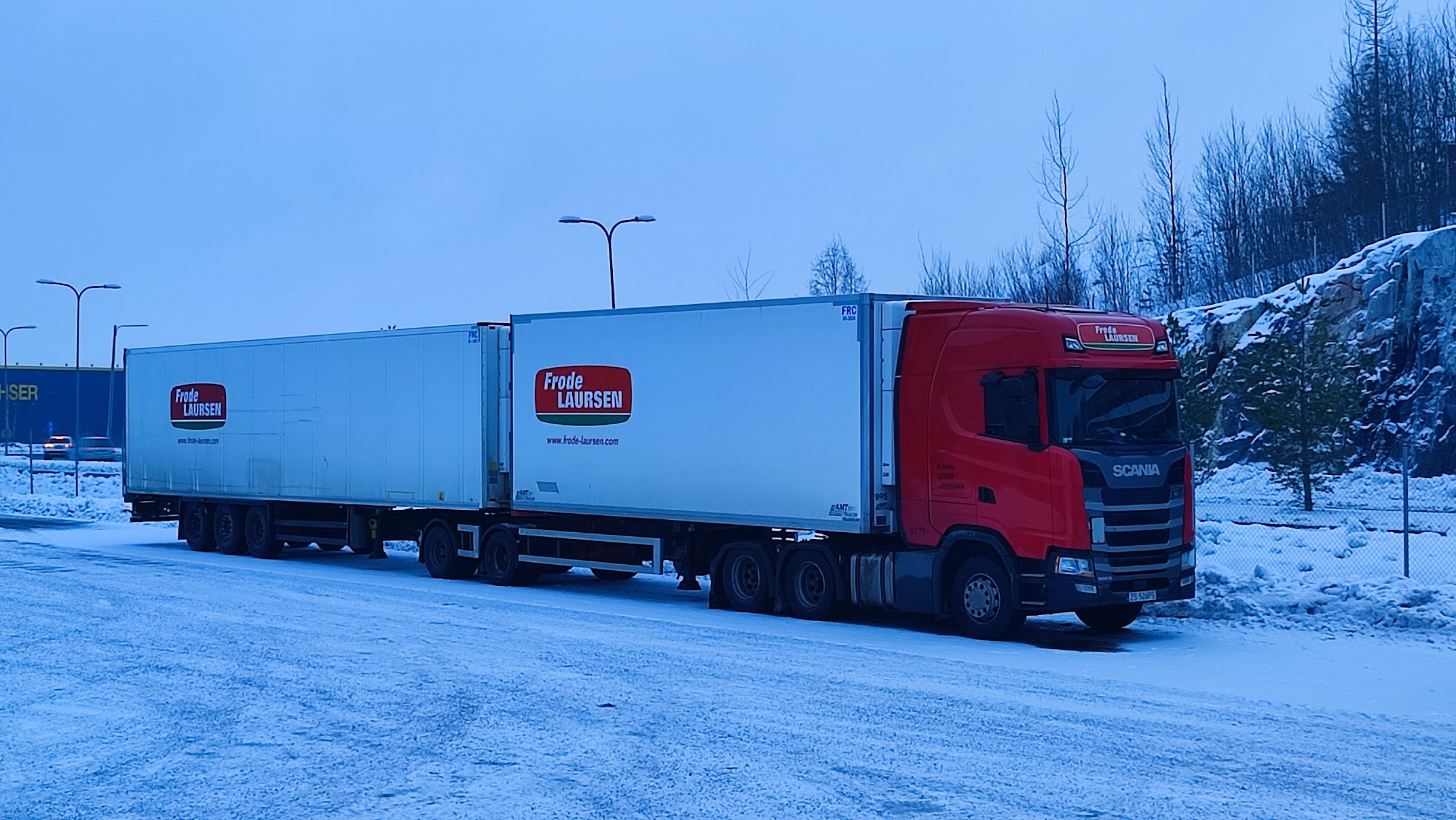Written by Tomasz Oryński
Polska wersja dostępna tutaj
“Finland, Finland, Finland, the country where I want to be, pony trekking or camping or just watching TV” sung the Monty Python some time ago. But is Finland a good country to drive trucks? As I have recently moved here after 17 years in Scotland, I am just about to find out.
Working in Britain for many years, many of those as agency driver, I was used to the situation when you turn up to your new job just to have your paperwork thrown at you and be told to go and find your own way of doing things. During the recent driver’s shortage, I met several drivers who left their bus driving jobs when the haulage companies started paying better and were let on the road without even being shown such basic things like how to safely use pump truck, the tail lift or how to secure their pallets with ratchet straps. So I was pleasantly surprised when in my new job in Finland I was assigned to share a truck with one of their drivers who’s job will be to show me the ropes and answer all my questions. And I do have a lot of them.
“My name is Kia” – says my co-driver when entering a cab of our Mercedes-Benz Actros 1843, and knowing that all the Finnish names are still tricky to me to remember adds, with a smile: “Kia, like a car”.
Kia Sorvali:
Kia Sorvali is in her late 20’s and has been a truck driver for a few years now. She liked cars since she was a little girl and although she does not strike me like a fanatic petrol head, it is clear that she knows her way around cars. It is not a family tradition for her tho, although she has some transport-related blood running in her veins: both her father and her grandfather were train drivers. But her first job involved driving a Sprinter van and that was when she felt the call of the road.
“It’s nice to just go and see the places. I don’t like to be stuck in the office. I like to be on the move and I like to move myself – I like not only driving but this part when you load and unload your cargo”.
In Finland it’s normal for the drivers to load their trucks, but then in the vast majority of the places we visited during our week together there were electric pump trucks provided for drivers to use. Kia rides them swiftly and with precision, and surely with much more grace than I do. She is also not a stranger to the forklift and other machinery
“When I was in school, we also learned how to drive a loader, but it wasn’t much, just a very brief one day course” – she said.
I asked her about it. How one becomes a truck driver in Finland?
“If you are a man, it’s usually through the army” – explains Kia. – “In the army it is possible to be trained and leave the service with C, C+E and D categories and the CPC, so you are ready to work straight out of the army, but not everyone will be chosen, as there is more candidates than places in training. The other option is the school. After the primary school, aged 15, you can choose to go to three years vocational school where you will learn things required for the career you have chosen. So for truck driving it will be learning how to drive and maintain the vehicle, but also some basic stuff about warehousing etc. During the first year you also have a classes with the general knowledge like maths and everything, but after that it’s only training in your chosen field. You will graduate with full set of qualifications, including the CPC. This school also does not prevent you from going to the university later and while if you applied for, for example, the history of Art, it might be seen as a disadvantage, surely you can score some points if you would want to do a degree in logistics”.
“So what about you? Did you became a trucker through one of those schools?”
“Yes and no. I paid for my C license myself, or rather, my grandmother founded it for me as a gift. I was already working and needed a truck driving license, as I was already 20 years old when I decided I want to be a truck driver – before that I trained as an electrician, but as I struggled to get the job of junior electrician and knew this is just a start of that career in Finland, I decided this is not a path for me. After that, I went back to school to train as a truck driver, but as I was already in the apprenticeship, I was working as a truck driver and went to classes few times in a month. Learnt about truck maintenance, and mostly the knowledge required for the professional qualification. I went straight to C+E and this time the school paid for everything: they had their own vehicles to train us and all the student need to do is to pay for test and some administration fees, so the whole license can cost you as little as 160 euros”.
We talk in English and although she occasionally struggles to find the word that she needs, I am quite impressed and asked her where she learned it so well: It turns out that her English is a great homage to the famous Finnish education system. Her driving skills also leave nothing to be desired, although both of us struggled a bit when reversing to the bay: me, because I am simply crap at this: having spend most of my trucking years driving smaller vehicles or whisky tankers into the most remote areas of Scotland, reversing artics up the docks the distribution centres, or even to supermarkets’ loading bays, were not exactly the staple of my everyday experience. But in her case the reason is different.
“I still can’t get used to this” – complains Kia after making a third shunt across the yard to back to line the trailer with the dock properly – “This truck is just too short and it bends in wrong place”.
Kia and her 25 meter long truck from previous job:
Yes, in Finland typical European artics comprised of tractor unit and a single semi-trailer are not that common, so most of Kia’s experience was with the six-wheeler rigids pulling semi-trailers on the dolly. The total length of such set is 25.25 metres, so I can understand how she feels – probably the same as when I was given an Actros Space Cab with a tiny urban trailer and send out to do deliveries around Glasgow last summer. She is not a great fan of the European standard.
“You can’t get a proper grip on a drive axle in winter” – she explains observing with visible discomfort how our wheels are spinning on a slippery icy patch outside one of the docks. “It is also too short and harder to control. I like the longer one better in winter, as not only they are harder to jackknife, but also if loaded properly, you will have all the weight on the drive axles”.
Of course those benefits come with the downside, if you are loaded in docks, you have to constantly unhitch the truck from the trailer to load both of them. Some drivers become fed up with this after some time, and she tells me a story about a very experienced driver who just loaded everything into the trailer leaving the truck empty and then very soon went off the road in a very spectacular way. But this is the very reason why we are to drive an artic, as our job is mostly shunting stuff between a few location that are very close to each other.
The larger trucks are seen everywhere in Finland in various configuration. Extra long semi trailers, B-links (the trailers that bend in the middle) or a typical artics that tow a centre axle trailers behind are just the few of the endless parade of the trucks exotic to the European eye, with every axle combination possible. In recent years so called HCT – High Capacity Trucks – are also becoming a common sight. Those can pull two standard sized semi-trailers (although from what I saw the first trailer usually is fitted with the rear steer axle to reduce the turning circle) and their max permissible mass can be, in some cases, even twice of that what we can see on European roads. There are even some Polish companies that take advantage of that and tow the extra large trailers between Nordic countries, as you don’t need any addition to your C+E licence to drive those.
Finnish truck with a longer, single semi-trailer:
25 meter long combination from a Polish branch of a Danish company Frode Laursen:
Big trucks are not very limited in the kind of roads they are allowed too – I regularly see them driving on the residential street near my home on their way to deliver to the local supermarket. Luckily, the Finnish infrastructure allows for that. The roads are wide and the junctions rarely require sharp turning. Also the distribution centres are surrounded with gigantic amounts of space to allow for those big trucks to manoeuvre comfortably. Kia takes a full advantage of that – I even allowed myself to mock her a bit for being spoiled with space – and it turns out that how to reverse into the bay by jackknifing the truck – rather than pulling it all the way to the front to align it with the bay and then reverse it in a straight line – is something that she can learn from me for a change.
I’ve also noticed a few times involuntary tensioning her body or even cowering a bit when I was driving too close to something for her liking, even though I was doing it slower than usual, as I still don’t feel fully comfortable to drive a truck when sitting on the left side of the cabin. She does not lectures me how to drive tho, although on one occasion she shouted as she was sure I am going to hit a fence when turning into a narrow entrance to an industrial area – I made a sharp turn to allow more space for the oncoming car and while having the trailer just a few inches from an obstacle is something absolutely normal on the Scottish roads, apparently it’s too much to stomach for even an experienced Finnish driver.
The only other occasion she felt the need to intervene is when I was trying to move to the right lane on the Helsinki bypass. “Why are you doing it, you will need to be on this lane in 3 kilometres, stay in the middle” – she exclaimed, visibly irritated. Apparently of many things Finns do right, the lane discipline and “keep right unless overtaking” rule is not something they are too fond of. On the other hand, if your truck can be over 30 metres long, I do understand why you would like to reduce the number of the lane changes in busy traffic to the necessary minimum.
But apart from the rare uncomfortable occasion when you have to supervise a driver coming from Britain, is being a truck driver a good way to make a living in Finland? Apparently it is. Kia seems perfectly happy with the job she has:
“I only drive day shift, as I like to be at home.” – she explains. And apparently she is comfortable with her income: with her boyfriend, also a truck driver, who after 10 years on the road now drives and operates a gully sucker truck, they bought a small house with a large garden on the outskirts of Helsinki a couple of years back. Unlike anyone I know in Britain, they were able to do it without a need to ask their parents for help. They also drive two decent cars and they are now pursuing their new passion of motorcycles – so far, from what she mention, they got a quad bike – and they take a full advantage of their 5 weeks holidays to travel the world. But the money can be even better.
“My boyfriend used to drive night shift, or have been a tramper – he used to be on the road usually for five days in the row, this really pays well, and then you have all those non-taxable allowances. Overtime is also paid at very good rates”.
“And how common it is to see a woman driver in Finland?” – I asked. – “Do you still get some strange looks from people, or are they impressed? Because in Poland or in Britain a girl behind the wheel is still a head turner for many”.
“I think every company has at least one woman driver. It of course depends of how big the company is, but it’s becoming normal in here to see women drivers. Sometimes people are still surprised to see it, but it is not so often any more” – she says.
“And do you think your gender might be an advantage of you? Are companies keen to employ women more, for example as a token to show how progressive they are?”
“Sometimes, yes. But on the other hand, some companies are still reluctant. They are still afraid of what will happen if their driver will get pregnant and so on, even though, of course, they won’t say it out loud. But as a general rule, I don’t think most people look at the gender any more. If you do your job well, that’s all that matters. Saying that, I had a few men who that told me that I will not make it in this field. I prove them wrong. It’s more about the technique than strength, I have done the supermarket distribution with tail lift in Helsinki for 4 years and moved those 300kg cages in snow and ice. I would like to send my warmest greetings to those guys if they are reading this”.
“But you were driving when you were pregnant, was your company fine with it?”
“Yes, when I found out I was pregnant, I was doing the night shift, so I spoke to my boss about it, as I didn’t wanted to be out and alone at night in case something happens. I was still in probation and my boss didn’t mind. They switched me to the day shift where every one around was helping me if there was something like picking up something heavy etc. The planners were picking the easiest runs for me so I could work safely. So there is nothing that would stop you from working up to the very late of your pregnancy unless your health prevents you from doing so. Of course after 8th month you are allowed to go onto your maternity leave”.
We had this conversation on Thursday and we had to cut it shortly, as our break had ended and we had to head out to our next collection. During that drive we spoke about the condition for truck drivers in international transport. From what I understood, in Finland long-distance drivers have a lot of time off when they return and it’s nothing unusual to work every second week or so for them. But it’s not the rule:
“My boyfriend sometimes was on the road for a few weeks and then had a week or two off. It all depends of what the boss needs”. – explains Kia.
I hoped we will be able to have another chat about work-life balance on Friday, but unfortunately that never happened. On Thursday evening we were done, we’ve clocked our contracted 40 hours in just four days, so we were given Friday off. And from Monday we are still to share the truck, but working alternative shifts…
So is Finland a good place to be a truck driver? Kia seems to be happy. And I like what I have seen so far too.
A mound of snow, typical of a Finish lot in a winter:




